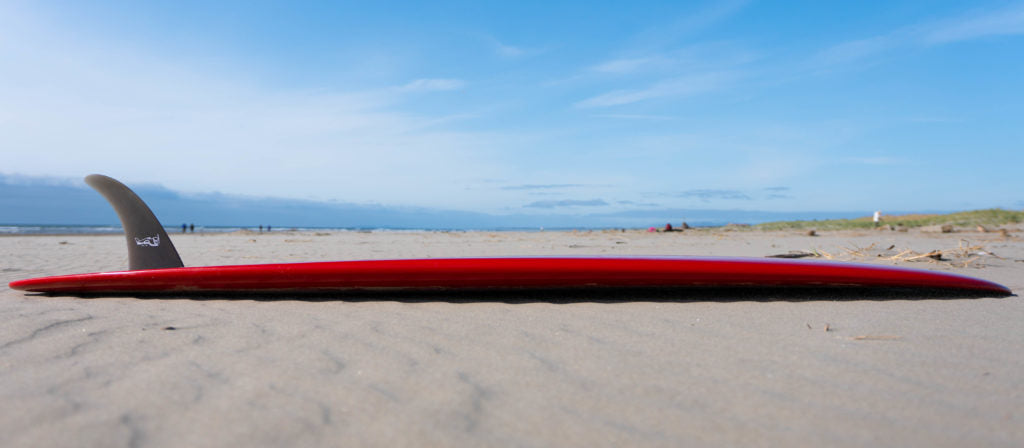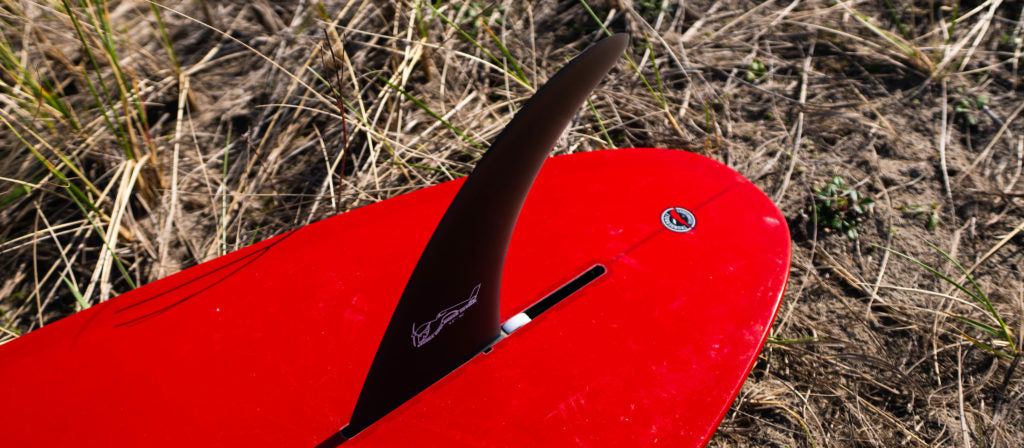CJ Nelson Outlier Mid-Length Review

Is this the most fun surfboard on the market? The CJ Nelson Outlier Mid-Length is a great pairing of classic design combined with modern construction. This was one of my go-to boards on fun summertime days when I was looking to cruise in the sun and catch some waves with friends. If you think this might be your board for the summer or are interested in hull surfboards read on to answer some questions you may have about the design.

Who is CJ Nelson?
CJ Nelson grew up in the Bay Area, California in the 80s and 90s. He became a fixture of the Santa Cruz longboard scene in the late 90s where he learned board design under legendary SC shaper Bob Pearson. CJ was a standout in Thomas Campbell’s 2005 film “The Sprout” which explored wave riding on alternative craft.

What is a Displacement Speed Hull Surfboard?
The design of the Outlier traces its roots back to the transitional era when surfboard lengths were changing by the foot in the 70s. These first ‘shortboards’ still had a lot of longboard features in the bottom contours and rails. This single fin design has a flatter longboard-like rocker with the wide point and volume shifted forward under the chest. There is a dramatic convex ‘belly’ bottom contour under the nose that transitions through the midsection to a flat bottom out the tail. The tail outline is pulled into a rounded pin but almost seems like it has the tiniest flat spot right at the tip making it a baby squash tail. The rails are very knifey and thin all the way through the board, with softer up rails complimenting the flat deck and rolled bottom under the nose, blending to hard down rails with a very domed deck through the tail. Surfboards with these characteristics are known as displacement hulls, speed hulls, or just hulls.

What Size Outlier Mid-Length Should I Get?
The Outlier Mid-Length comes in 3 sizes, a 7’6”, 8’ and 9’. They also recently released a shorter and wider version, the 7’ Outlier Two Plus One, that is as wide as the nine-footer with side bite fin boxes. The 7’ Two Plus One or 7’6” Mid-Length are good sizes for smaller surfers, or those used to riding smaller boards. The 8’ is a good length for most surfers, either shortboarders looking for a longer board, or longboarders looking for a shorter board. The 9 footer is a great alternative longboard for a surfer who isn’t interested in noseriding but still wants to cruise and catch waves easily. The new 7' Two Plus One is a great groveler mid-length, with all the surface area there is a lot of potential for speed and loose, easy turns with those side fins. I’m an intermediate life-long surfer, a bigger guy around 230lbs with a 5m full suit on, and rode the 7’6” for this review.

What is it like to surf the Outlier Mid-Length?
The flat rocker combined with the buoyant lightweight construction paddles great and allows you to glide into waves with ease. The convex belly under the nose combined with the up rails creates a really smooth buttery feel that doesn’t get hung up. One of the most unique feelings about this design is how easily the bellied bottom sucks the board up into a high line in the curl. The belly creates a giant sweet spot that allows you to climb, then drop, and turn from the middle of the board. The rolled bottom can feel slippery and sensitive to ride at first, but once you figure out how well it cruises in the pocket you might get hooked. The board appreciates a rail-oriented, front-foot approach, great for snowboarders or someone coming off a log and wanting to surf a smaller board. Conversely, if you ride shorter boards and want to feel what a traditional surfboard feels like, but don’t want to carry a 10’ log down to the beach, this could be a fun board for you.

While most of the surf world forgot about these transition-era boards once the thruster came along, these hulls have developed quite a cult following due to the unique enjoyable feel they provide on the wave. The ride can be abstractly compared to riding a fixed-gear bicycle, or driving a manual transmission car; there is a connected feel in the ride that requires a more present and focused approach that is truly a joy to surf.

How are Thunderbolt Surfboards Made?
The Outlier is made in Thunderbolt construction out of Japan. CJ Nelson was instrumental in testing the validity of this new tech construction and bringing it to the masses. All Thunderbolt boards start with a machined lightweight EPS blank. From there a high-density foam insert is added around the fin box area for durability. Carbon stringers are placed in an “A” pattern on the bottom and a “V” pattern on the deck for flex. Then they rout the centerline deck of the blank and tuck a strip of carbon fiberglass into the narrow groove, creating a “T” shaped double vertical carbon fiber wall for extra linear strength and flex control. All Thunderbolt Construction "AVT" blanks are then sealed with lightweight fiberglass, coated with PVC for waterproofing durability against minor dings, and molded into precise rocker beds. Thunderbolt Red boards are laminated with a fiberglass shell. Personally, coming from a traditional PU board background, this is one of my favorite epoxy constructions for longboards. The flex is good, the boards are lightweight, and are really durable against minor dings.
What Fin Should I Get for my Outlier Mid-Length?
I tried multiple different fin templates, sizes, and flex profiles on this board and found I liked the True Ames Greenough 4C best on the 7’6”. It’s a fairly wide-based high aspect ratio fin at 9.5” deep. As a big guy, I usually like bigger fins. The Outlier surfs best with a rail-oriented approach, so you want to find a fin that provides enough hold, but also gets out of the way. I found this style of hull surfboard works really well with the fin pushed all the way forward in the box, this could also be because I usually surfed the board on softer and smaller waves. I recommend a longer fin, 9” or more for hold, but with a narrow base and template for maneuverability, and a thin top for flex and spring. There are a number of fin designs that would work well like the Liddle Flex, CI Spicy, or Skip Frye. CJ also has his own line of fins with Flying Diamonds, and his Involvement fin would pair well with this board.

Outro
Hopefully, that answered any questions you have about the CJ Nelson Outlier Mid-Length. This is a fun board to surf that glides, trims, and turns with an easy smooth feeling. After riding this board over the summer I felt so inspired that I made a couple more hull style boards with some experimental fin setups that I rode through the winter. The Outlier would be a great surfboard for an intermediate to advanced surfer looking for a board that prioritizes feel and experience. If you have any more questions or just want to talk story please drop a note in the comments below, give us a call at 888-546-6176, or email us at support@cleanlinesurf.com











